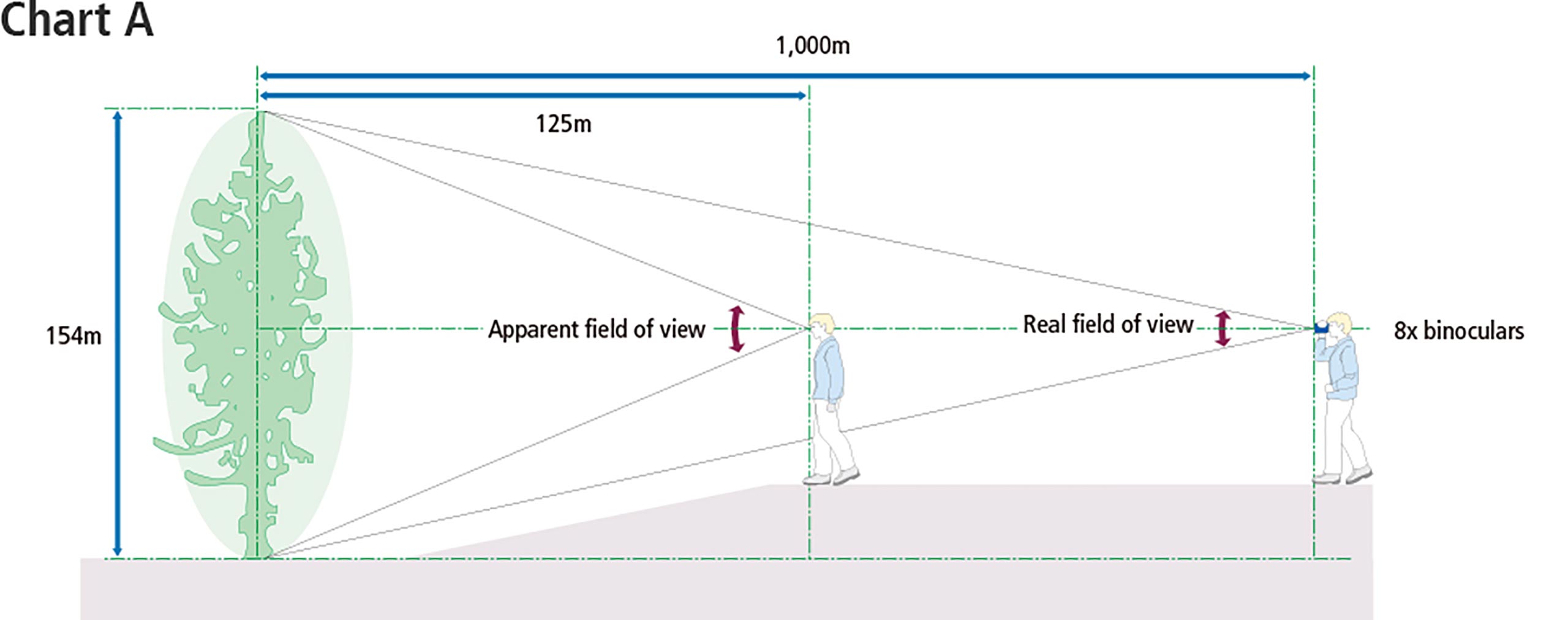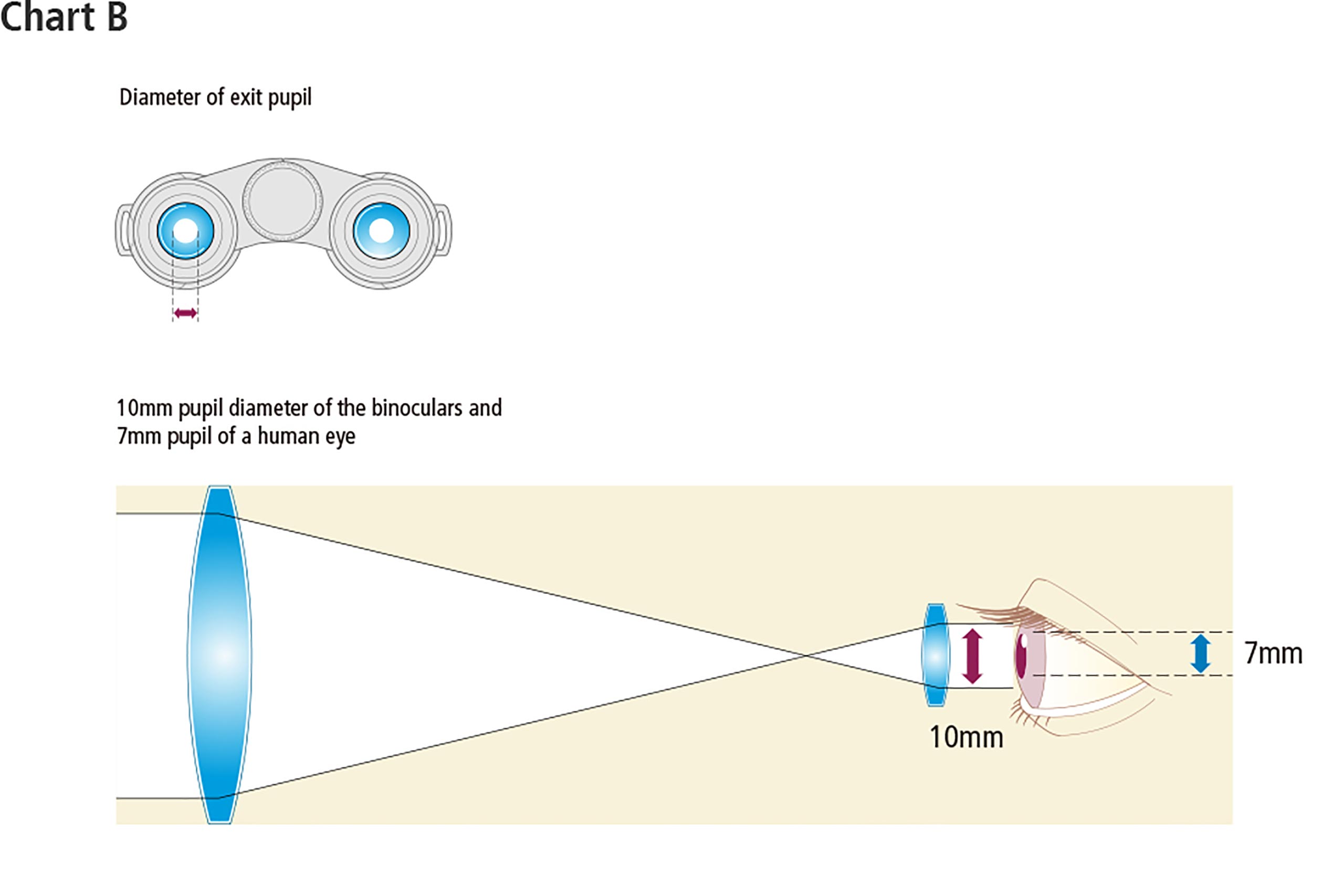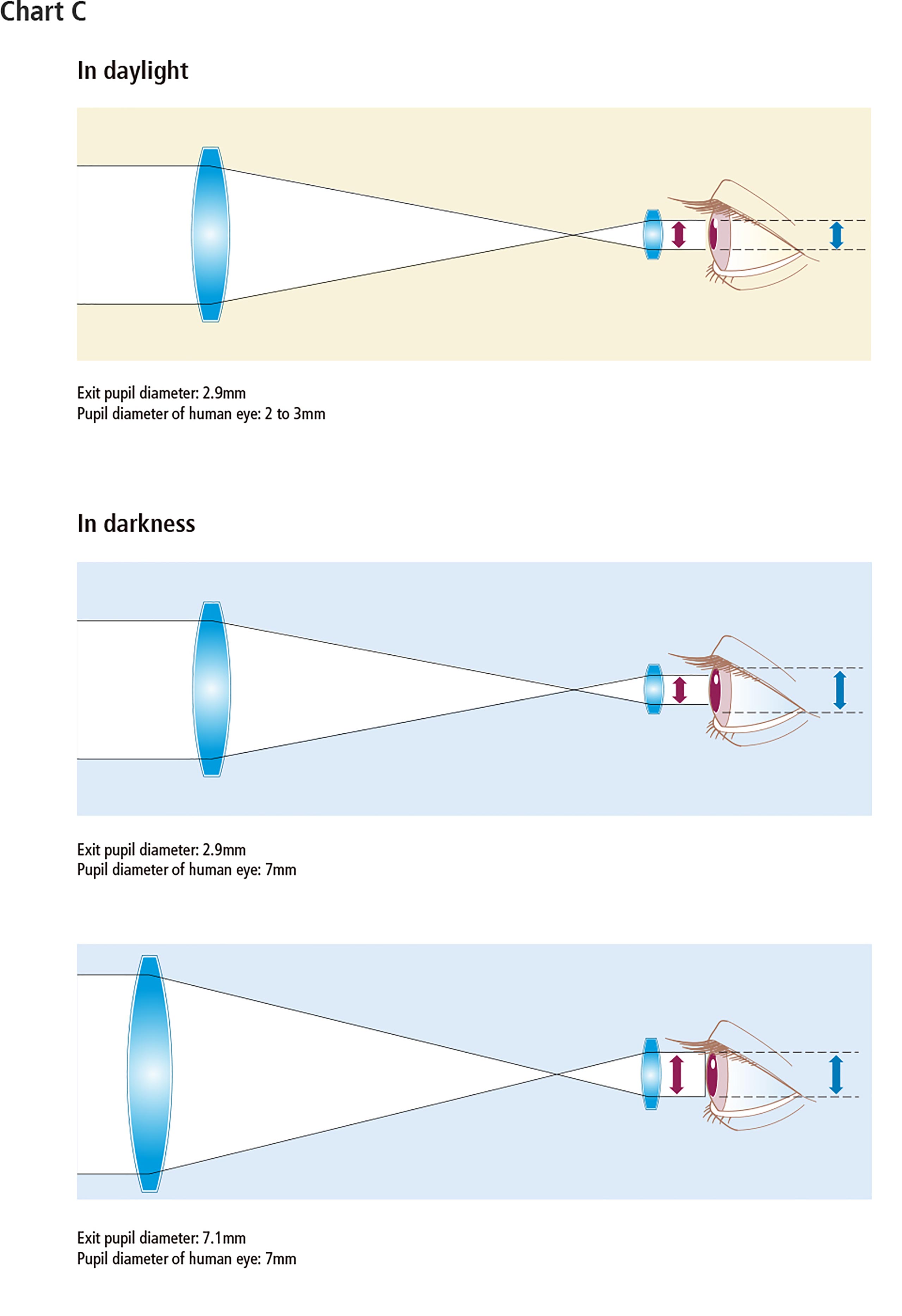Glossary of binocular terms
| Magnification | Magnification, represented by a numerical value, is the relationship between a subject's real proportions and its magnified size. A subject 700 meters away seen with 7x magnification appears as it would from 100 meters with the naked eye. Magnifications less than 5x are generally not powerful enough for outdoor use. When magnification exceeds 12x, hand movement makes the image unstable and viewing uncomfortable. For general use, magnifications of 6x to 10x are recommended. |
|---|---|
| Objective diameter | The effective aperture is the inside diameter (in mm) of the objective (front) lens frame. The larger the objective diameter, the greater the resolving power and the brighter the image. But large-diameter objective lenses make binoculars heavier, so 50mm is the general limit for manual operation. |
| Real field of view | The real field of view is the angle of the viewing field measured from the central point of the objective lens. All binoculars use numbers that indicate various specifications. In "8 x 40 8.8º", for example, 8.8º represents the real field of view. (chart A) |
| Apparent field of view | The apparent field of view* conveys how wide that field of view appears to the naked eye. (Chart A) |
| Field of view at 1,000m | The real field of view at 1,000 meters is the width of the visible area at a distance of 1,000 meters. (chart A) |
| Eye pupil | The exit pupil is the image formed by the eyepiece lenses. The diameter of the exit pupil (in mm) is the effective aperture divided by magnification. The diameter of the human eye pupil varies from 2-3mm in daylight to 7mm in the dark. An exit pupil of 7mm gives maximum light to the dilated eye and is ideal for use in the dark. (chart B) |
| Brightness | Relative brightness value is obtained by squaring the diameter of the exit pupil. The greater the relative brightness, the brighter the image. However, this value does not correspond exactly to increases in brightness over the naked eye, because light coming through the binoculars is 100% effective only if the exit pupil is the same diameter as the pupil of the eye. (chart C) |
| Eye relief | Eye relief is the distance between the eyepiece and the eyepoint. When you place your eye correctly at the eyepoint, you can see the whole field of view without any vignetting. High eyepoint binoculars with longer eye relief are recommended for eyeglass wearers who can see the whole field of view without any vignetting. |
- *Nikon has adopted a calculation method based on ISO 14132-1:2002, and therefore,values for the apparent field of view have changed from those previously stated.



